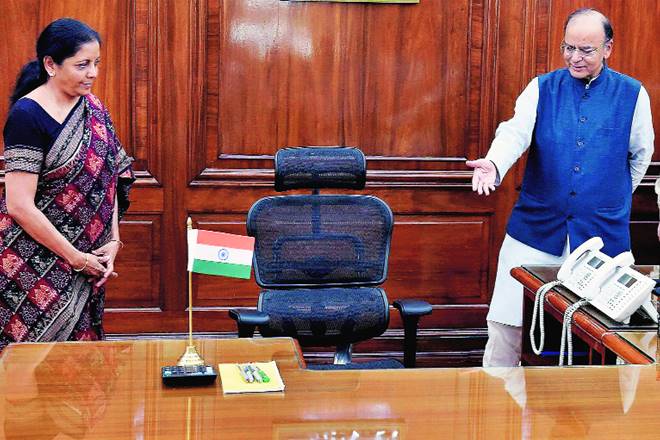A decade proves to be a short time for reforms in military affairs, while a week is a long time in politics. However, surprise elements in Indian politics (the latest reshuffle in the Cabinet) notwithstanding, India appears to challenge conventional notions about military reforms, at least in initiating realms, if not in implementation and results thereafter. The results may vary, but intents transcend regimes.
Consider the initiatives in the past three regimes (AB Vajpayee, UPA-1 and UPA-2).
– Close to a dozen high power committees, starting from K Subrahmanyam (1999), GoM (2001), Vijay Kelkar (2004), Probir Sengupta (2005) to Rama Rao (2008) and Gupta (2012), to name a few, on various aspects of reforms in defence sector have been appointed, whose recommendations have either been partly implemented or shelved altogether (Sengupta, for example);
– Nine rounds of reviews, starting from 2002 till date, have led to the same number of editions of the Defence Procurement Procedure (DPP);
– The so-called game-changing initiatives—private participation, FDI, offsets, to name a few—have been introduced and implemented. Cumulative results can best be described as ‘mixed’. Waves of enthusiasm and disappointments at different times typify this era. This is simply because of the fact that foreign companies saw opportunities in the large Indian defence market, while the Indian companies also got swayed into this wave. State-owned defence enterprises saw it as a disruptive wave.
Consider the initiatives under the current regime (Narendra Modi).
– Four different ministers for the same domain—Arun Jaitley (temporary), Manohar Parrikar (full-time), Jaitley (temporary, again) and Nirmala Sitharaman (full-time, hopefully)—in that order, to devise, lead and implement strategic directions for the Indian defence sector;
– Revisions of DPP still continue (DPP 2016);
– Two major committees (Dhirendra Singh, 2015 and DB Shekatkar, 2016) and nearly half a dozen committees and taskforces (Vivek Rae, VK Aatre, to name a few) have been constituted, whose recommendations are in various stages of implementation or partial or full abandonment;
– Last but not the least, not-too-clear policies like ‘strategic partnerships’ and role of small and medium enterprises in Indian defence manufacturing ecosystem. Real Indian stakeholders did not see any juice in this promising basket.
An interesting corollary of the above initiatives furthered by the current regime suggests that ‘overt enthusiasm’ or ‘discreet disappointment’ by stakeholders are now replaced by either ‘cautious optimism’ at the positive best, or ‘sunset syndrome’ at the worst.
But, consider the latest developments: (1) a second-time temporary-cum-mentor minister Jaitley announces measures related to combat capacity enhancement of the army through tough scrubbing of systemic sediments (as part of recommendations made by Shekatkar) and within a week Sitharaman takes over; and (2) the much-awaited ‘strategic partnerships’ in Indian defence was also unveiled by Jaitley not too long ago.
What lessons do we learn from the latest developments related to recommendations made by the Shekatkar committee? I place four pointers for further scrutiny.
– Military institutions get fat over a period of time unless they are periodically scrubbed by political decisions (read, redeployment of 57,000 personnel from non-combat duties, optimisation of assets that are redundant like signals, farms, repair workshops, depots, transports, postal depots, etc;
– Military institutions must adapt to new realities and therefore be ‘adaptable’ (all spectrum adaptation—from combat to non-combat to seamless integration into the society), which means that higher military institutions must be deeply embedded into civilian administration;
– Perceptional disconnect between the military and others must be broken down;
– Last but not the least, stakeholders of Indian defence sector must be given a fair chance to prove themselves.
Among the many issues confronting the military today, Shekatkar committee touched upon the most sensitive one—quantitative aspects of forces, their structures, assets and resources. It indirectly asks a fundamental question as to whether the Indian Army should be manpower-intensive or be a lean, mean fighting machine (as the Chinese say) to fight the next war on the digital battlefield. The larger question is whether demobilisation of forces would impact materially the combat effectiveness of the armed forces? Also, whether assets thus far owned by the army (radio, base workshops, etc) worth it? If not, why not abandon them and replace with newer systems? Abandonment of such material assets would invite protesting interests from the private sector, which is not a bad idea at all.
Our new Raksha Mantri Sitharaman will have enough on her plates in three types—past (restructuring), present (faster procurement) and future (unmanned systems, to name a few). She will have three advantages: (1) knowledge from above; (2) knowledge at work; and (3) knowledge from within. All the very best to her.


